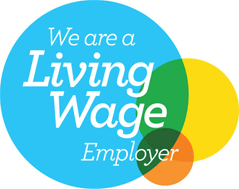FAQs: Statutory Shared Parental Pay for Employees
- What is Shared Parental Pay?
- Are you eligible for Shared Parental Pay?
- What are the detailed eligibility requirements for Shared Parental Pay?
- Are the rules for eligibility for Shared Parental Pay the same for your partner?
- How long can you claim Shared Parental Pay for?
- How do you claim Shared Parental Pay?
- How much is Shared Parental Pay?
- Who pays Shared Parental Pay?
- If your employer pays enhanced maternity pay, do they have to pay enhanced Shared Parental Pay too?
What is Shared Parental Pay?
Employment legislation allows parents to Shared Parental Leave (SPL) and pay following the birth or adoption of a child.
Employed parents who take SPL are eligible for a statutory payment called shared parental pay (ShPP).
ShPP will apply where:
- The expected week of childbirth (EWC)
- A child is placed for adoption
The government has published guidance in order to clarify entitlement for SPL and ShPP. Please note that the answers to the following questions are accurate in respect to births but may vary for adopters.
Are you eligible for Shared Parental Pay?
In general, if you are eligible for SPL you should also be eligible for ShPP (subject to completing the relevant paperwork) if you have normal weekly earnings of at least the lower earnings threshold for national insurance contributions. If you have qualified for Statutory Maternity Pay (SMP), Statutory Adoption Pay (SAP) or Statutory Paternity Pay (SAP), you will have met this test.
If you are not an employee you may still qualify for ShPP because it includes anyone who is an “employed earner” for National Insurance purposes (for example, agency workers).
To claim ShPP you must be (or have been) in “employed earners employment” for 26 weeks at the relevant qualification date, provided the other parent also meets particular criteria as to their economic activity.
What are the detailed eligibility requirements for Shared Parental Pay?
To satisfy the continuity of employment and normal weekly earning tests, you must:
- Have been continuously employed as an “employed earner” with your employer for at least 26 weeks by the “relevant week”, which is the 15th week before the EWC (meaning that you must have been employed for 40 weeks before the EWC)
- Have normal weekly earnings during the last eight weeks of your employment prior to the 15th week before the EWC of at least the lower earnings limit for the purposes of getting national insurance credits
- Continue in employment with your employer between the 15th week before the EWC and the last week before taking SPL
Are the rules for eligibility for Shared Parental Pay the same for your partner?
No, in order for you to qualify for ShPP, your partner must satisfy certain conditions relating to employment and earnings which they will do if:
- They have been an “employed earner” or “self-employed earner” for any part of the week for at least 26 of the previous 66 weeks leading up to the EWC. (A week counts if the person has worked in any part of that week).
- They have “average weekly earnings” of at least the state maternity allowance (MA) in relation to the tax year before the tax year containing the calculation week. This means that they must have been paid on average £30 per week in the 13 highest-earning weeks in the 66 weeks immediately before the EWC, including any pay earned in respect of that period but not paid until afterwards
How long can you claim Shared Parental Pay for?
Practically speaking, you and your partner have a total ShPP entitlement of 37 weeks less any weeks (or part of a week) in which the mother received or will receive SMP or MA before curtailing her SMP or MA period. This because mothers must take two weeks’ compulsory maternity leave, for which they will receive SMP or MA.
Assuming both parents qualify for ShPP, you will be able to choose how to divide the ShPP entitlement between you and must notify your employers of this in writing.
For example: if a mother takes six weeks’ maternity leave and during those weeks is paid SMP, there will be 33 weeks of ShPP left for the parents to share between them.
How do you claim Shared Parental Pay?
The mother must either have returned to work or curtailed her pay or allowance period. There are also complicated requirements to provide notice and evidence that are almost identical to those required for Shared Parental Leave. These are set in more detail in an Acas practice guide
How much is Shared Parental Pay?
The weekly rate of ShPP is the lower of:
- The “prescribed rate” (currently £184.03)
- 90% of the normal weekly earnings of the person claiming ShPP
The difference between SMP and ShPP is that ShPP is capped at a statutory amount for every week for which a parent claims ShPP, while SMP is payable at 90% of actual salary (with no cap) for the first six weeks of maternity leave. This means that most mothers will take maternity leave and pay for at least six weeks to take advantage of the higher rate.
Who pays Shared Parental Pay?
ShPP is paid by the employer of the parent taking the leave. Your employer can recover at least 92% from the government.
There is no statutory requirement for your employer to enhance ShPP and the government considers that there is no need for employers to do so. However, some employers are choosing to match their maternity terms. Having unequal pay rights may be a type of discrimination and you may be able to make a legal challenge at an Employment Tribunal that forces your employer to.
For more information about Shared Parental Pay and the right not to be subject to any detriments for asking for ShPP, please contact us today on 01273 609911, or email info@ms-solicitors.co.uk.


